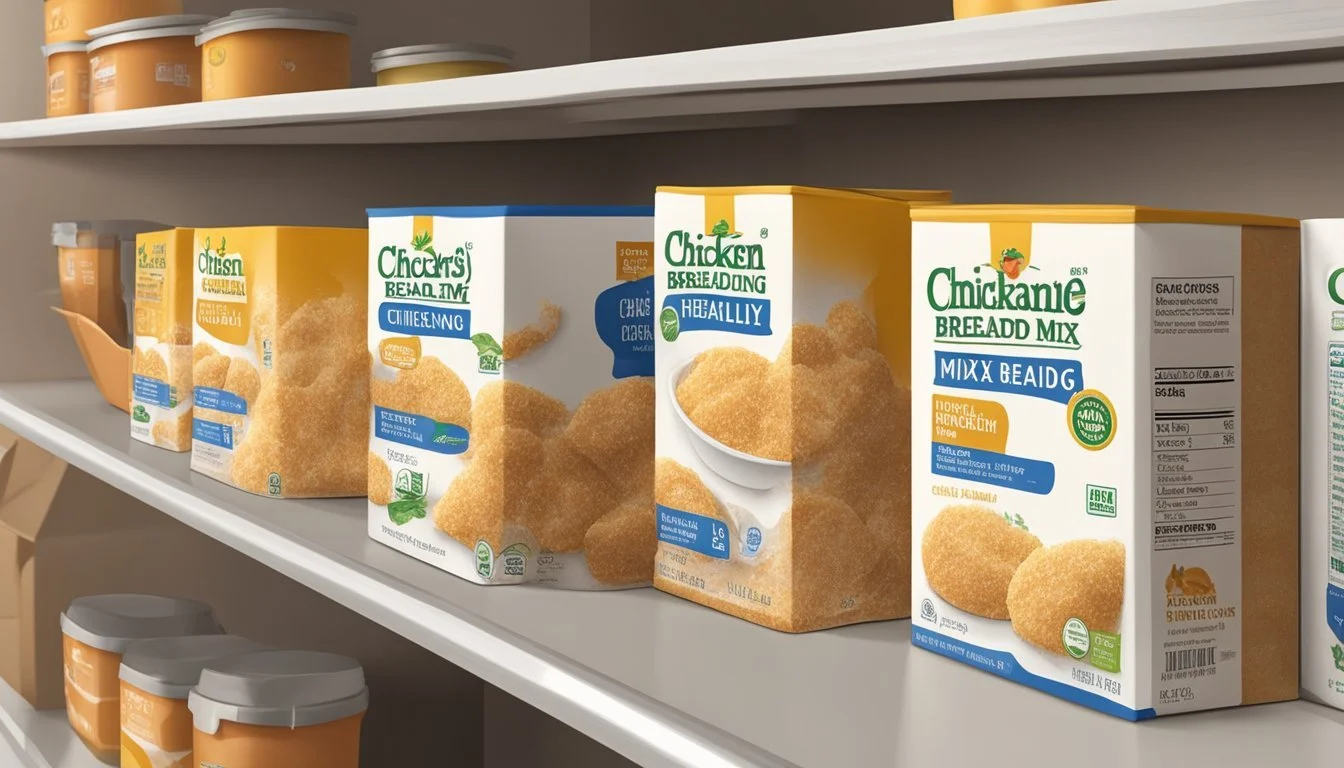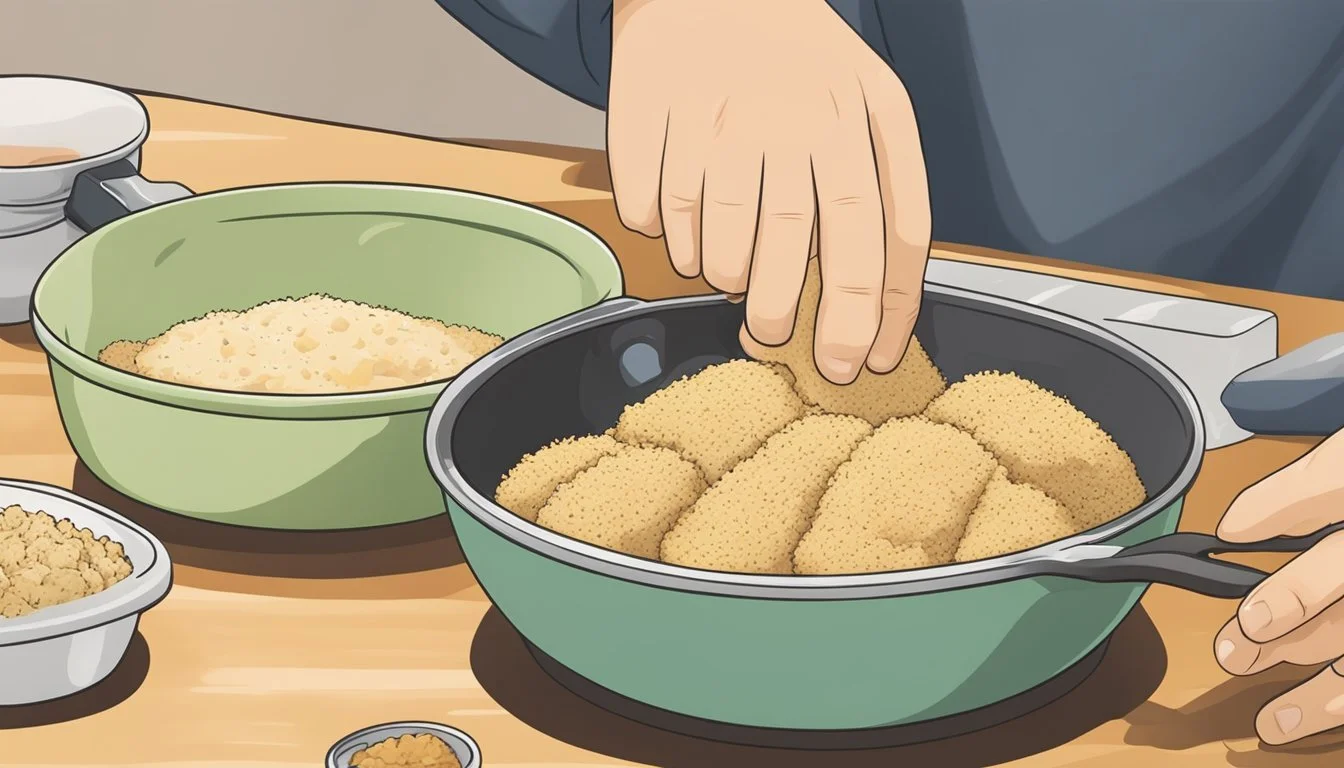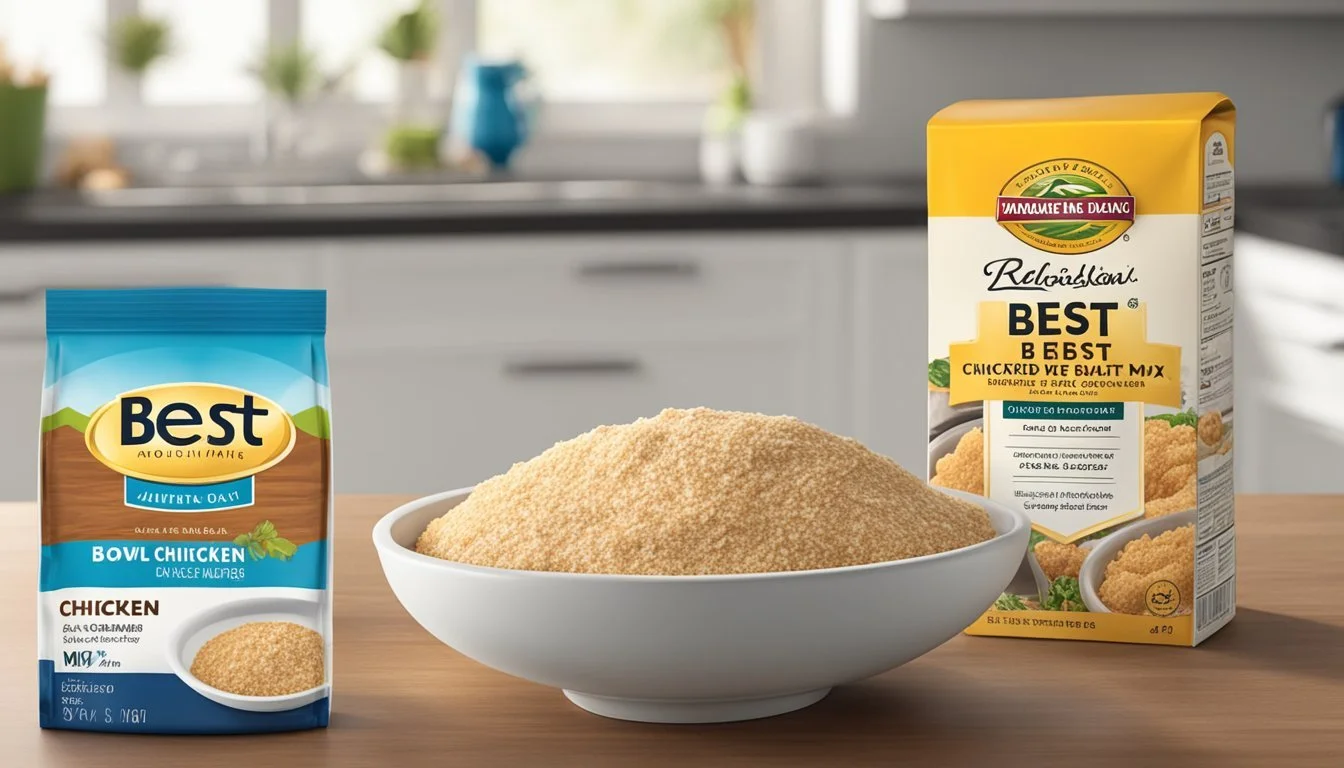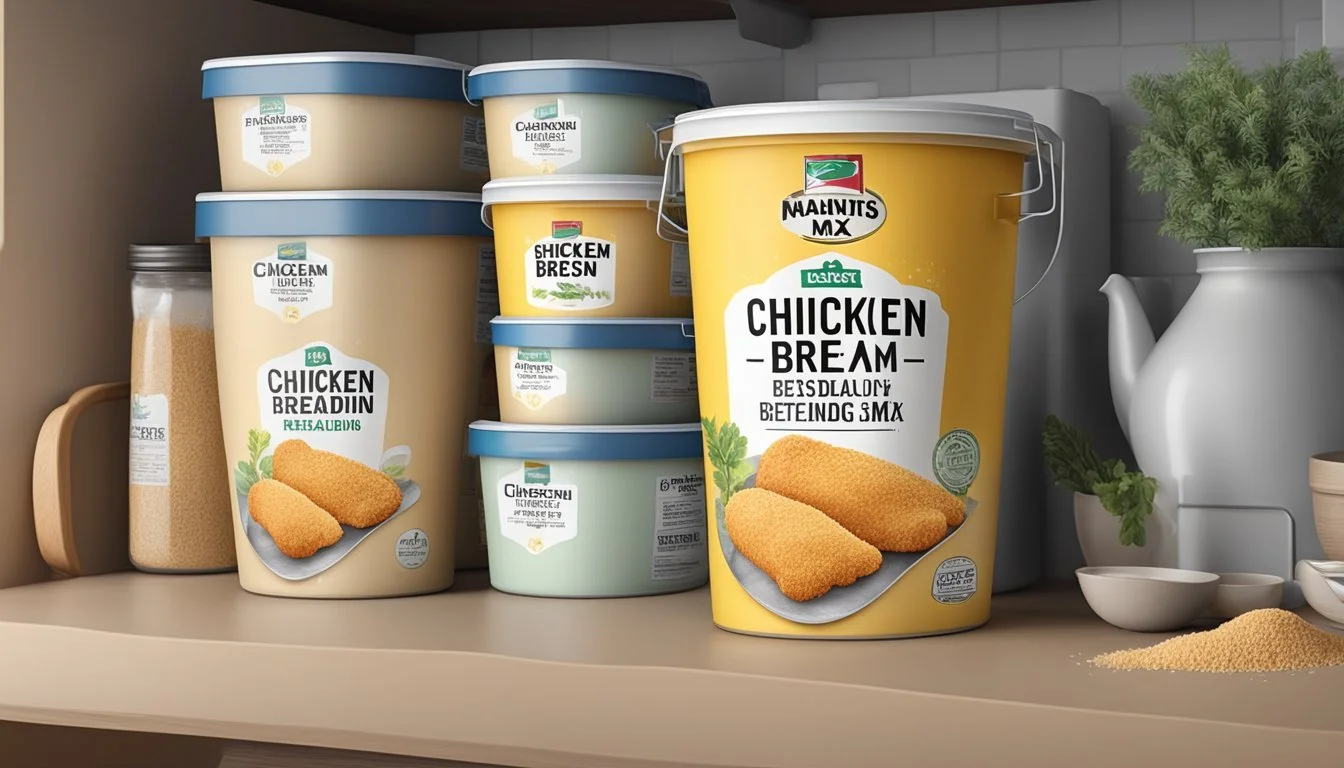How Long Does Chicken Breading Mix Last?
Shelf Life and Storage Tips
Breading mix, a staple in many kitchens, is prized for its ability to add a satisfying crunch and flavor to chicken and other meats. Understanding its shelf life is crucial for maintaining both the quality of the dishes it's used in and the safety of those consuming the breaded items. The longevity of chicken breading mix is influenced by a variety of factors, including the ingredients, packaging, and storage conditions.
Proper storage conditions for chicken breading mix can extend its usability. When kept in a cool, dry place away from direct sunlight, breading mix can last beyond the printed expiration date, though the quality may degrade over time. It's essential to keep the mix sealed tightly to prevent moisture, which can introduce mold or bacteria, thereby compromising the mix.
Determining whether a chicken breading mix is still viable involves checking for signs of spoilage such as an off odor, changes in texture, or visible mold. Usage past the prime quality date can result in a less crisp texture and muted flavors once cooked. It ensures that one gets the optimal taste and texture as intended by the breading mix, guaranteeing the success of their breaded dishes.
Chicken Breading Essentials
To achieve the perfect breaded chicken, it is essential to understand the breading process and the key ingredients involved. Each component plays a pivotal role in the final product's taste and texture.
Understanding Breading
Breading chicken involves coating it in a layer of dry ingredients to provide texture and flavor to its outer surface. Proper breading can not only enhance the overall eating experience but also plays a critical role in sealing in the chicken’s natural juices during cooking. The process typically follows a three-part method:
The initial coating of flour helps to dry the surface of the chicken, which aids the subsequent layers in adhering better.
An egg wash, which may sometimes include milk or water, acts as a binding agent for the third component.
Finally, breadcrumbs are applied, which give the bite and crispness that is characteristic of breaded chicken.
Key Ingredients
The selection of high-quality ingredients is fundamental to creating a superior breaded chicken. Here, the essentials are itemized:
Flour: Acts as the initial coating; should be evenly applied and any excess shaken off for optimal adhesion.
Egg: Works as the glue between the flour and breadcrumbs. Achieving the right viscosity of the egg wash is crucial — not too runny, not too thick.
Breadcrumbs: Can vary from fine to coarse, seasoned or unseasoned, and include options like panko for a lighter, crispier result.
By adhering to these steps and carefully selecting and using these key ingredients, cooks can ensure their breading stays intact and provides a delicious crunch with every bite.
Breading Technique and Preparation
The quality and longevity of chicken breading mix depend heavily on the initial preparation and breading technique employed. Proper preparation sets the foundation for a durable and flavorful coating.
Preparation Steps
Before beginning the breading process, it's essential to gather all necessary ingredients and equipment. This preparation means setting up a station with separate bowls for each component of the breading: typically flour mixed with seasoning, beaten eggs possibly thinned with a small amount of milk, and breadcrumbs or another final coating.
Key preparation steps include:
Seasoning the flour: Combine flour with desired seasonings like salt, pepper, garlic powder, (how long does garlic powder last?) or herbs to taste.
Preparing the egg wash: Beat eggs thoroughly, adding a splash of milk to achieve a smooth consistency.
Organizing the breading station: Position the bowls in assembly line order—flour mixture, egg wash, and final coating—ending with a clean plate to place the breaded chicken.
Dredging and Coating Methods
The actual breading process is crucial for creating a mix that stays on the chicken. Begin by lightly coating the chicken in the seasoned flour; this step helps the egg wash to adhere. Next, dip the chicken into the beaten egg, allowing excess to drip off, ensuring a thin binding layer for the final coat.
Effective dredging and coating methods entail:
Dredging: Dust the chicken with the seasoned flour, ensuring a complete but light coating. Shake off any excess to prevent clumping.
Egg Wash: Dip the floured chicken into the beaten egg mix, letting any extra liquid fall away.
Final Coating: Press the chicken into the breadcrumbs or chosen final coating, covering it evenly.
By following these detailed steps, one can master the breading technique, resulting in a mix that adheres well and lasts for the intended period of use.
Cooking Methods
In the realm of cooking breaded chicken, the longevity and effectiveness of the breading mix largely hinge on the method used to cook the chicken. Variables such as cooking temperatures and equipment can influence how well the breading adheres to the chicken and its eventual shelf-life once applied.
Frying Chicken
When frying chicken, chefs typically employ either deep frying or pan frying methods. For deep frying:
Heat oil to a temperature between 350°F to 375°F.
Fry the chicken until it's golden brown and reaches an internal temperature of 165°F.
Pan frying requires less oil and often results in a less greasy product:
Use a cast-iron or nonstick skillet with a few tablespoons of oil over medium-high heat.
Cook the chicken for about 4 to 5 minutes per side, depending on thickness.
Baking Chicken
The oven presents a healthier alternative to frying, and can give a similar texture if done correctly.
Preheat the oven to 375°F.
Bake chicken on a wire rack above a baking sheet to allow air circulation for an even crust.
The cooking time varies but usually takes around 20 to 30 minutes.
Alternative Cooking Techniques
Air frying has gained popularity as a healthy substitute for deep frying:
Preheat the air fryer to about 375°F.
Cook the breaded chicken for about 15 to 20 minutes, flipping halfway through.
Another less common method is sautéing:
Heat a small amount of oil on medium-high.
Sauté the chicken until the breading is crisp and the meat is cooked through, typically 6 to 8 minutes per side.
Flavor Enhancements
Flavor enhancements are pivotal for creating a delicious and memorable breaded chicken experience. They can transform simple breading into a taste sensation with a harmonious blend of spices and herbs.
Seasonings and Spices
A well-curated selection of seasonings and spices can elevate the taste profile of breading mix. Beyond the foundational salt and pepper, one can integrate a variety of spices to achieve the desired flavor complexity.
Salt: An essential that brings out the overall flavor.
Pepper: Adds a mild, sharp flavor and comes in varieties such as black, white, and red.
Paprika: Imparts a smoky, sweet note, and can be found in sweet, smoked, or hot variants.
Additional Spices: Depending on the palate, other spices like garlic powder, onion powder (how long does onion powder last?), cayenne, or chili powder can be added to introduce new dimensions of flavor.
Herbs and Flavoring
Fresh or dried herbs(how long do dried herbs last?) provide an aromatic element to the breading mix, enhancing its sensory appeal. When selecting herbs, one should consider their compatibility with the main spices used in the breading.
Dried Herbs: Such as thyme, oregano, basil, and rosemary add concentrated flavor and are more potent than their fresh counterparts.
Herb Pairings: Pairing herbs with spices can yield a complex flavor profile. For example, combining rosemary with garlic powder or basil with paprika can create a harmonious taste experience.
Storing and Shelf Life
When storing chicken breading mix, its longevity hinges on proper storage conditions. Maintaining these conditions ensures the preservation of quality and flavor.
Refrigeration and Freezing
Refrigeration is not typically required for unopened chicken breading mix; however, if the package is opened and the user wishes to extend its shelf life, refrigeration can be beneficial. An airtight container is essential when refrigerating to prevent moisture and other contaminants. When refrigerated properly, opened breading mix can last up to:
3 months
For long-term storage, freezing can be employed. It's critical to store the mix in a freezer-safe, airtight container or freezer bag to minimize freezer burn and taste alterations. Under optimal freezing conditions, chicken breading mix can be used up to:
6 months
Pantry Storage
Chicken breading mix fares best in a cool, dry pantry. The original packaging may be sufficient if unopened, but transferring to an airtight container is advisable, especially after opening. The pantry should be free from temperature fluctuations and not exposed to direct sunlight. In a pantry environment, an unopened or properly stored opened chicken breading mix can last:
Unopened: up to 12-18 months
Opened (in airtight container): up to 6 months
Regularly check the mix for signs of spoilage such as off-odors, changes in appearance or pests. Do not use the mix beyond the use-by date provided by the manufacturer.
Food Safety and Handling
In the context of using breading mixtures for chicken, food safety and handling are paramount to prevent foodborne illness. These practices ensure that the crumb mix remains safe to use and does not become a breeding ground for harmful bacteria.
Preventing Cross-Contamination
Cross-contamination is a critical aspect to manage when working with raw poultry and breading mixtures. It’s essential to never dip cooked food or utensils that have touched cooked food into the same breading mix that was used with raw chicken, as this can introduce harmful pathogens from meat juices into the crumb mix. To prevent cross-contamination:
Use separate containers: Keep raw and cooked foods distinct to avoid mixing.
Clean utensils and surfaces: After breading raw chicken, clean all surfaces and tools thoroughly with hot, soapy water.
Proper Storage Techniques
Preserving the quality and safety of a chicken breading mix revolves around controlling moisture and temperature. To properly store breading mix:
Keep it dry: Ensure that the breading mix remains free from moisture, as it can lead to bacterial growth.
Chill promptly: If the breading mix has come into contact with raw chicken, one must refrigerate or discard it. Per food safety recommendations, refrigeration should occur at temperatures below 40°F (4°C), and the mix can be used up to 7 days when stored properly.
Sift regularly: Sifting the mix removes lumps, including those caused by clumping due to moisture or meat juices, and is necessary before refrigeration.
By following these protocols, one can maintain a safe cooking environment and extend the usability of breading mixtures without endangering health.
Serving Suggestions
When serving breaded chicken, the focus should be on enhancing its crispy texture and flavor. Thoughtful accompaniments and presentation tips play a crucial role in elevating the dining experience.
Accompaniments
Salad: A fresh garden salad with a light vinaigrette complements the richness of the crispy chicken, providing a balance of textures and flavors.
Pasta: Serve alongside a portion of buttered pasta, garlic bread (What wine goes well with bread?), or a creamy Alfredo to add a comforting carbohydrate component to the meal.
Dipping Sauces: Offer a variety of sauces such as honey mustard, barbecue, or a homemade aioli to accentuate the savory taste of the chicken breading.
Presentation Tips
Plating: Place the crispy chicken atop a bed of greens or next to a nest of pasta for visual appeal and immediate taste pairing.
Garnishing: A sprinkle of fresh herbs or a lemon wedge can add a pop of color and provide a zest that cuts through the breading's richness.
Advanced Breading Variations
Expanding breading techniques to accommodate dietary restrictions brings diversity to the culinary experience. These variations maintain the crumbly, crisp exterior of traditional breading while utilizing different base components.
Gluten-Free Options
Gluten-free breading alternatives are designed for those avoiding wheat flour due to health concerns such as celiac disease or gluten sensitivity. One can utilize a variety of gluten-free flours, ranging from rice flour (how long does rice flour last?) to almond flour, to achieve a similar texture to traditional breadings. Here's a straightforward guide to creating a gluten-free breading mix:
Base Flour: Use rice, chickpea, or almond flour.
For Binding: Whisked eggs or a gluten-free egg substitute.
Crumb Option: Gluten-free panko breadcrumbs (how long do panko breadcrumbs last?) or homemade breadcrumbs from gluten-free bread.
This combination ensures the breading adheres well to the chicken and results in a satisfying crunch.
Vegan and Vegetarian Alternatives
For those who follow a vegan or vegetarian diet, breading chicken or its plant-based substitutes doesn't have to mean compromising on taste or texture. The key lies in substituting the egg, which acts as a binding agent, with a plant-based alternative. A common approach is as follows:
Base Flour: All-purpose flour or a gluten-free substitute.
Vegan Binding Agent: A slurry made from flaxseed meal or chickpea flour (how long does chickpea flour last?) mixed with water.
Breadcrumb Selection: Panko breadcrumbs for an extra crispy finish or homemade breadcrumbs using vegan bread.
With these substitutions, one achieves a breading that is both free of animal products and delivers a delightful crunch.
Transforming Leftovers
The key to repurposing chicken breading mix is to both reimagine it in innovative dishes and preserve its desirable crunch. Careful storage and creative thinking can turn leftovers into delightful, crunchy components that enliven a range of dishes from chicken parmesan (What wine goes well with chicken parmesan?) to crunchy salads.
Creative Reuse
Leftover chicken breading, when stored properly, can be the star ingredient in a number of dishes. One can take advantage of its seasoned flavors and rich texture to enhance new meals.
Chicken Parmesan: Leftover breading can be sprinkled atop chicken parmesan before baking, creating an extra flavor dimension and texture.
Casseroles: Incorporate breadcrumbs into casseroles for a heartier taste profile.
Chicken Fingers and Chicken Nuggets: Use the breading as a base for these dishes, coating fresh chicken to maximize flavor and crunch.
Salads: For a crunchy topping, one can scatter breading mix over salads, lending a satisfying contrast to the fresh vegetables.
Meatballs: Mix with ground chicken for elevated meatballs that maintain a moist interior with a flavorful crust.
Maintaining Crispiness
To keep the breading mixture crisp, one should store it in a cool, dry environment away from moisture. Airtight containers or zip-top bags are ideal for refrigeration or freezing, preventing the mix from becoming soggy and unappealing.
Refrigeration: An airtight container maintains quality for up to 3 days.
Freezing: Freeze in an airtight container for extended storage, up to 1-3 months.
Reheating Fried Chicken: To retain the crunch, reheat in an oven or toaster oven rather than a microwave. Leftover fried chicken can be reheated to an internal temperature of 165°F to insure both safety and quality.
Using these practices, cooks can confidently venture into creating memorable, delicious dishes that showcase the enduring appeal of breaded chicken in its many forms.
Additional Tips and Tricks
In ensuring that your breaded chicken is both evenly cooked and possesses a satisfying crunch, certain practices can make all the difference.
Even Cooking
One should use a skillet that provides consistent heat distribution, such as cast iron, for a golden brown, evenly cooked exterior. The chicken pieces should be laid in a single layer without overcrowding to ensure each piece cooks at the same rate. For oven baking, it's ideal to preheat the oven and use a wire rack on a baking sheet so heat circulates evenly around the chicken, promoting even cooking and a crispy texture.
Enhancing Crunchiness
To enhance the crunchiness of the breaded chicken, one might consider the following:
Employing a breadcrumb mix with panko for a lighter, crunchier texture.
Allowing breaded chicken to sit for a few minutes before cooking can help the coating adhere better and result in a crispier finish.
Cooking at the right temperature is key; a medium-high heat in the skillet ensures the breading becomes crispy and crunchy without burning.
In the oven, using a higher temperature can lead to a more crispy and golden brown crust without drying out the meat.
By adhering to these methodologies, one can significantly improve the quality of their breaded chicken dishes.
Conclusion
Proper storage and handling of chicken breading mix are essential for maintaining its quality and ensuring food safety. Based on expert advice, one should be aware that dry breading mixtures have a limited shelf life.
Shelf Life of Chicken Breading Mix:
Sift Regularly: To maintain freshness, the breading mixture should be sifted every 4 hours to eliminate moisture and prevent clumps.
Discard Old Mix: The mix should be discarded after 7 days, or earlier if it shows any signs of spoilage or contamination.
Key Takeaways:
Dry Storage: Always store the breading mix in a cool, dry place to extend its usability.
Avoid Cross-Contamination: Never reuse breading that has come into contact with raw chicken.
Freshness: For optimum flavor and adherence, use the mix within the recommended time frame.
Food Safety Consideration: Remember that the quality of your dish not only depends on the breading technique but also on the freshness of the breading mix itself. Chefs should routinely refresh their breading supplies to ensure the safety and satisfaction of those consuming their breaded chicken dishes.











